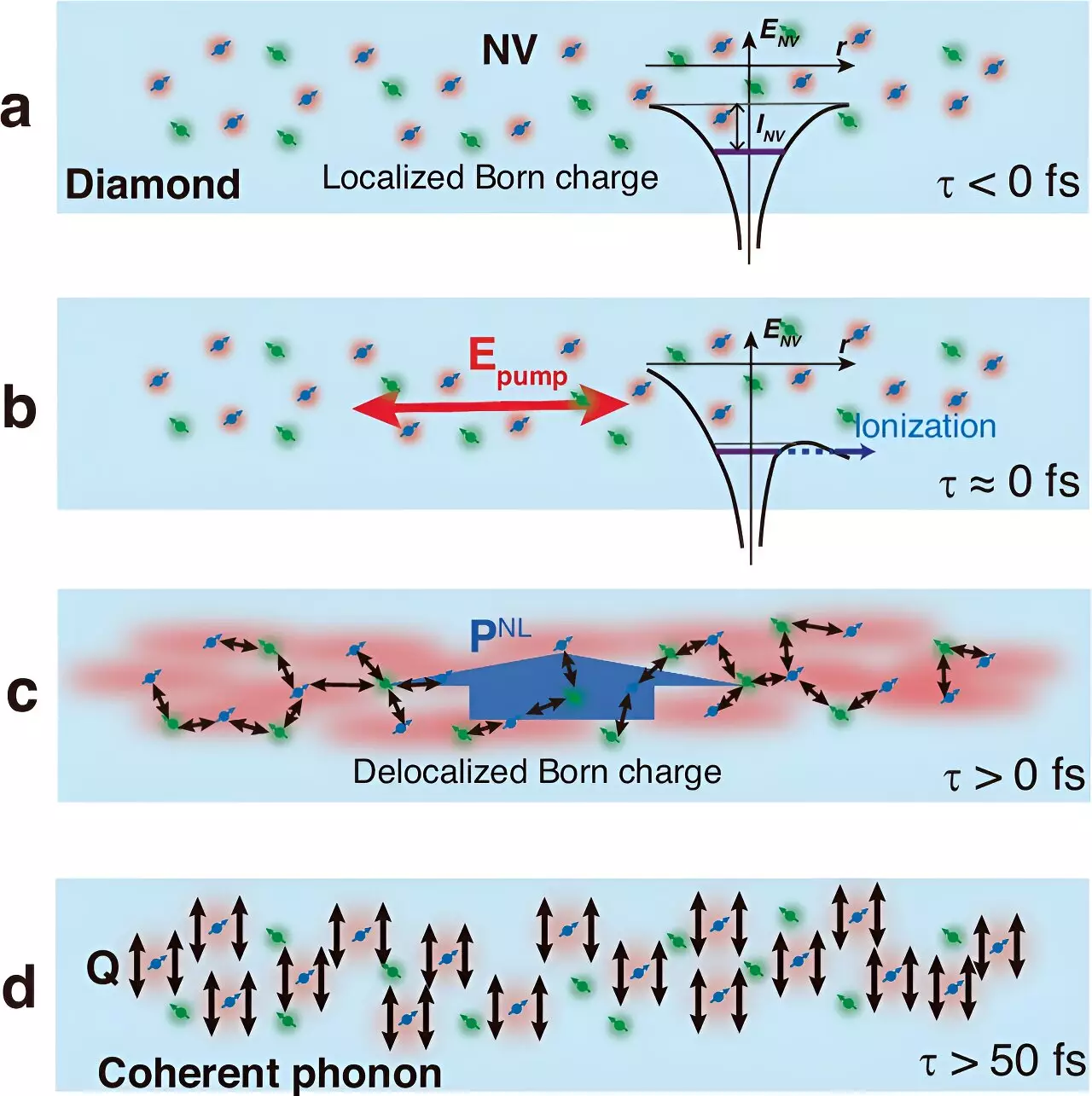Recent advancements in quantum sensing have opened new avenues for scientific exploration, particularly through the investigation of polaron quasiparticles within diamond crystals. A team led by researchers at the University of Tsukuba has made significant strides in understanding the interaction between electrons and lattice vibrations at color centers in diamonds. Their study reveals compelling insights into how these interactions can enhance our ability to build sensors with high sensitivity and spatial resolution. This breakthrough was documented in Nature Communications, showcasing the intersection of quantum physics with material science.
Color centers, particularly nitrogen-vacancy (N-V) centers, play a crucial role in the optical properties and functionality of diamonds. The presence of nitrogen atoms in proximity to vacancies creates these N-V centers, which serve as defects that significantly alter diamond’s color and physical phenomena. What makes N-V centers particularly interesting is their extraordinary sensitivity to environmental factors, including temperature shifts and magnetic field variations. This responsiveness arises from changes in the quantum state of the N-V centers, paving the way for the potential development of advanced sensors designed to detect subtle alterations in physical conditions.
The research team employed a sophisticated experimental approach involving ultrashort laser pulses to probe the reflectance changes induced by lattice vibrations within the diamonds containing N-V centers. In this pursuit, they applied nanosheets containing controlled densities of N-V centers to closely analyze the lattice dynamics surrounding these defects. The results indicated a marked increase in the amplitude of lattice vibrations—quantified as an exceptional 13-fold enhancement—although the initial density of N-V centers was relatively low. This amplification can be attributed to the unique properties of the quasiparticles formed during the interaction between the defect-induced electrons and the vibrational modes of the crystal lattice.
A particularly intriguing aspect of this study was the revelation of Fröhlich polarons, a type of polaron quasiparticle thought to be absent in diamond lattices. By conducting first-principles calculations, the researchers uncovered a distribution of charged states, suggesting a dynamic interplay between positive and negative charges within the N-V centers. Fröhlich polarons, characterized by a free charge carrier enveloped in a phonon cloud, were confirmed to arise from the layer of nanosheets. This finding marks a significant shift in our understanding of how polarons can manifest in diamond, challenging prior assumptions and broadening the framework for future quantum sensing applications.
The implications of these findings extend beyond academic curiosity; they offer transformative opportunities for the creation of novel quantum sensors. The ability to harness the amplified lattice vibrations and the unique polarons presents a pathway toward sensors that could operate with unprecedented precision and accuracy. As researchers delve deeper into the interactions between nitrogen-vacancy centers, lattice vibrations, and quasiparticles, a new realm of quantum technologies is expected to emerge. This study not only underscores the potential applications of diamond-based sensors but also emphasizes the importance of continued exploration in the field of material science to unlock new technological advancements.
The pioneering research conducted by the University of Tsukuba offers profound insights into the workings of polaron quasiparticles, presenting a rich landscape for innovation in quantum sensing technologies.

